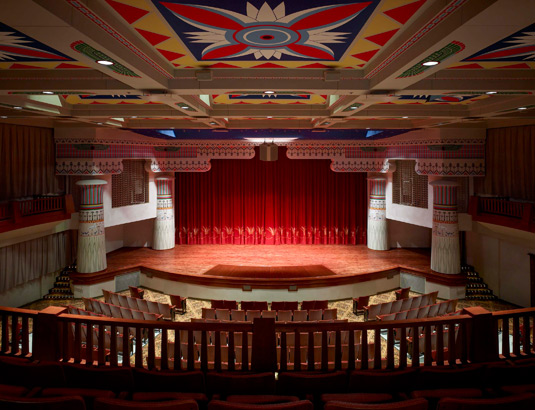Rekindling the Romance of Historic Theaters – Beyond The Crumbling Facade
The crumbling facade of the vacant old theater to the casual onlooker is an eyesore. There are hundreds of them across North America. Once vibrant settings showcasing human creativity, these performing arts centers have fallen victim to the march of progress – abandoned in favor of more modern performing arts centers, cinematic megaplexes and home theater systems. Municipalities who serve as guardians to these buildings struggle with difficult choices: do they engage the services of a wrecking ball to reclaim these properties for other purposes OR do they honor the heritage these structures represent by revitalizing them to reinforce community identity and stimulate downtown commerce and growth?
Having been involved with numerous historic theater renovation projects, I routinely get called in to compare the advantages of preserving these buildings vs. erecting new facilities. Concerns hinge mostly on cost. Can these renovation and restoration efforts be cost-effective? What are the advantages of restoring these old facilities versus starting fresh?
In many situations, a strong case can be made for renovating and restoring these old facilities. Let us examine some acoustical advantages. Historic theatre structures tend to be heavy masonry construction as this was the only known building technique at the time. Present day structures utilize modern building techniques and materials. While lighter and potentially less expensive to build, they heavy masonry buildings offer stronger acoustical properties. Scale is another advantage of historic theatres. They are smaller than their more modern counterparts. Building codes have changed over the years and while renovations will need to comply with specific life safety codes, historic buildings are exempt from some of the costly requirements that new structures are subjected to. As a result, the size of historic theatres is significantly smaller than a modern theatre with the same seating capacity. These smaller audience houses offer both visual and acoustic intimacy.
Adapting these spaces to accommodate 21st Century performances and audience expectations may require some enhancements such as the addition of adjustable acoustic elements but these elements are a budget item for new spaces as well.
Community pride is another benefit. These buildings served as settings for life-time memories across several generations. These were places where people connected with greatness and legends such as Sarah Bernhardt, Enrico Caruso, Mae West, Charlie Parker and Miles Davis. These were places where souls were ignited to deliver thunderous applause. Those who remember want to preserve the magic and share it with future generations. It is a powerful energy that can engage a dedicated group of citizens to wage a 17-year campaign to save an iconic theater of the past – as what happened with the Lincoln Theatre in Columbus, Ohio.
Restoration efforts returned the Egyptian Revival-style 1928 theatre to its previous grandeur and its modernization included the addition of a digital projection system and recording capabilities for both audio and video productions. The 566-seat main stage draws audiences for emerging and established musical artists, theatre and films. The second floor ballroom and third floor serve as home to 10 resident arts groups and the Jazz Arts Group’s Jazz Academy and provide spaces for rehearsal, classes and offices. While fortifying the resurgence of the downtown King-Lincoln district the building also creates accessible quality cultural opportunities for both artist and patron in the Central Ohio region.

Lincoln Theatre in Columbus, OH